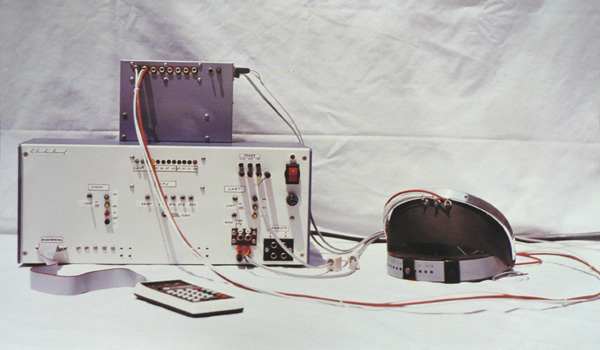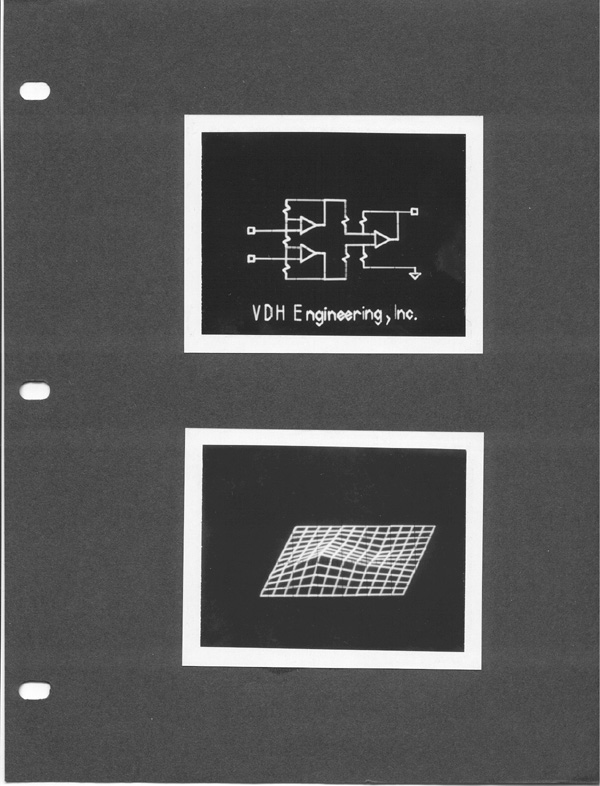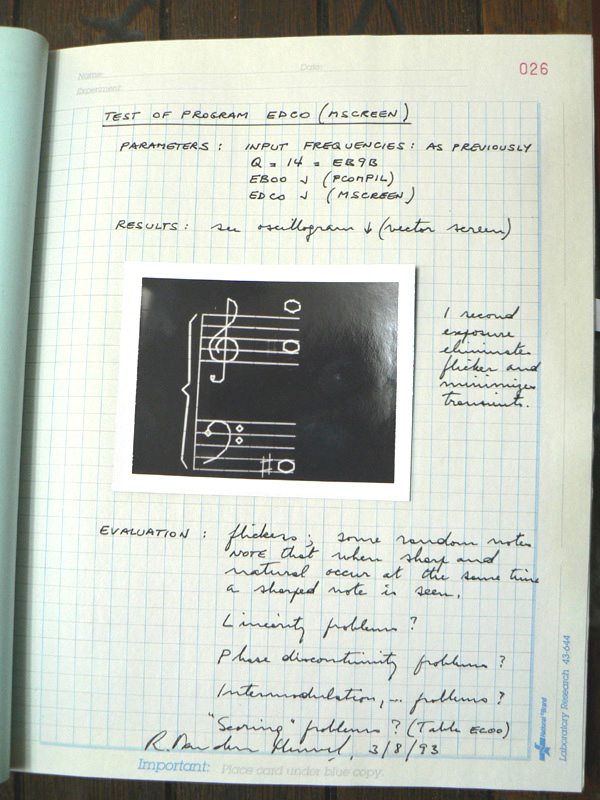
The VDH Biocomputer was the start of a protracted, personal effort to develop medical applications. In those days, video images were made-up of straight line segments -- called vectors -- drawn on the screen of an X-Y oscilloscope. It was the age of expensive memory -- approximately thirty cents per individual bit! The chief virtue of the (analog) vector method was that only three bytes of digital data were needed to define one (infinite resolution) analog vector. I got a patent on the method for making all vectors straight, accurately joined at their ends and the same brightness regardless of length.

The top photo shows that the display could handle schematics.
In the lower photo a horizontal grid represents the surface of the skull. When the voltage picked up by a scalp electrode is processed, the corresponding spot on the grid rises and falls like the corresponding brainwave. The resultant animation evokes the rising and falling of swells on the surface of the ocean. One major application was EEG biofeedback.
 000113
000113
Using my patented neural engine, I could compute -- in real time! -- the frequency of the notes being played on a piano (for instance). The above vector display shows a musical staff on which these notes would be represented, singly or in combinations (i.e., chords). An animated sheet music composer!
For the next three years I worked at home as a consultant and an inventor. I tried to start a business. I learned a lot on the subject of business ... and finally decided to wait until the remaining technical problems of my "zero latency frequency spectrum analyzer" were solved.

Last Update February 12, 2013
©2013 Raymond Van den Heuvel
-- all rights reserved


 000113
000113
